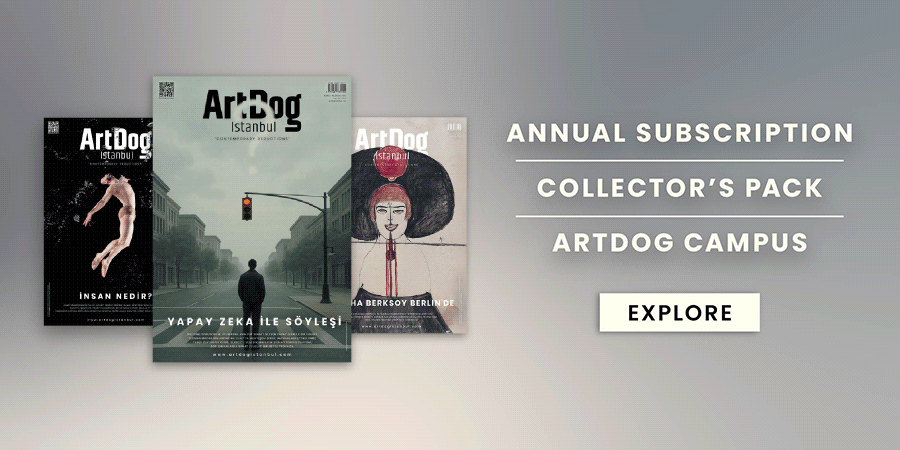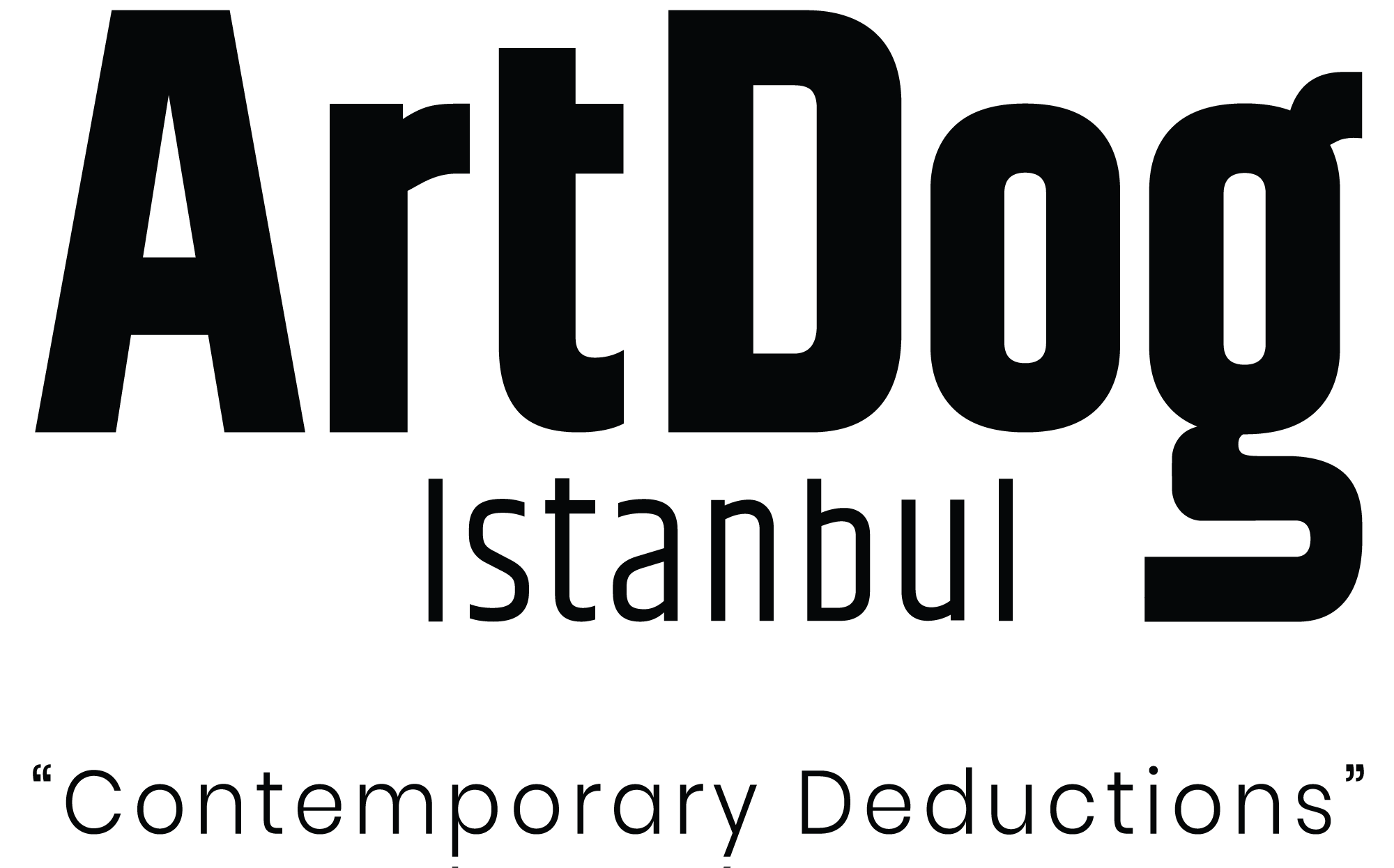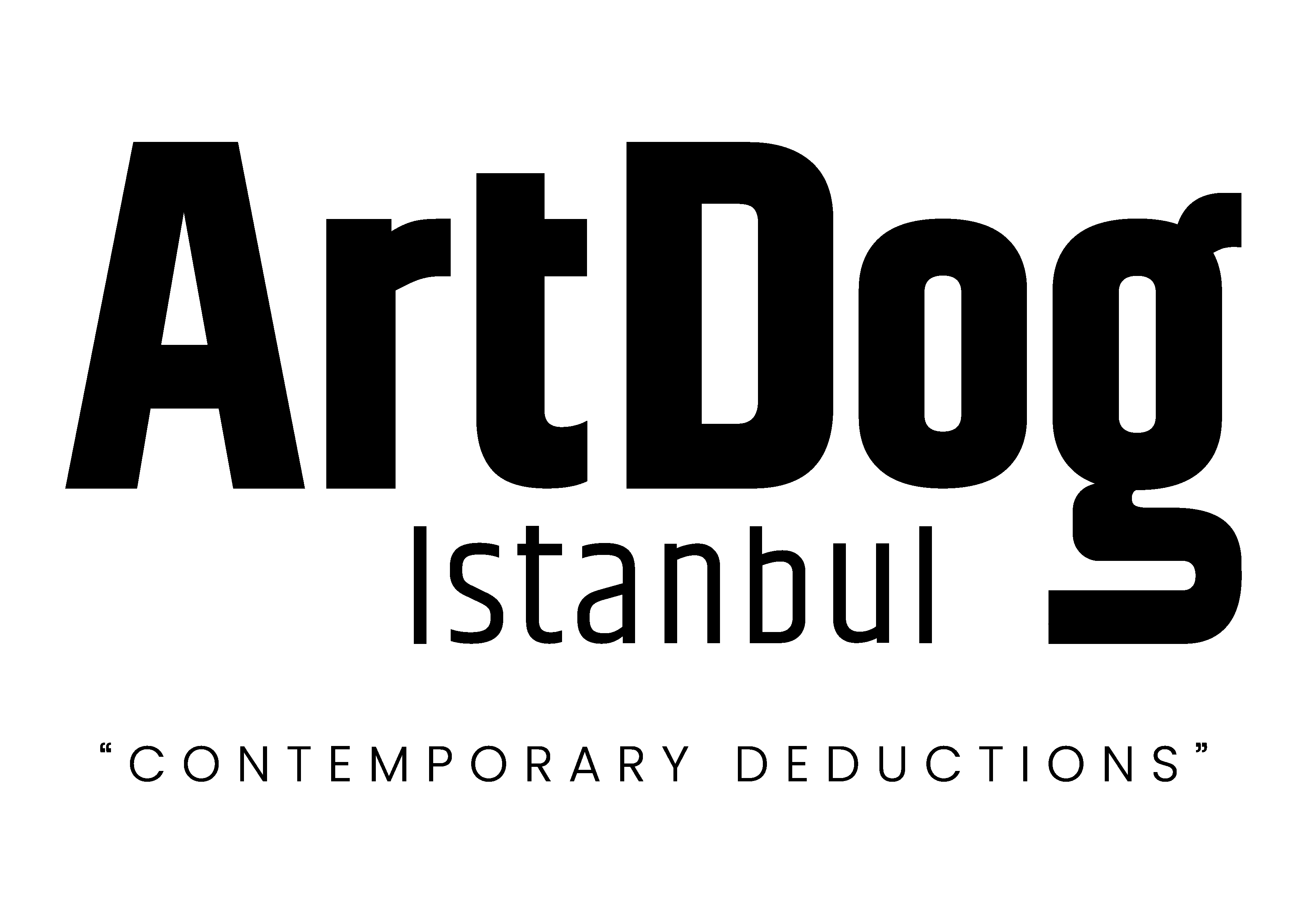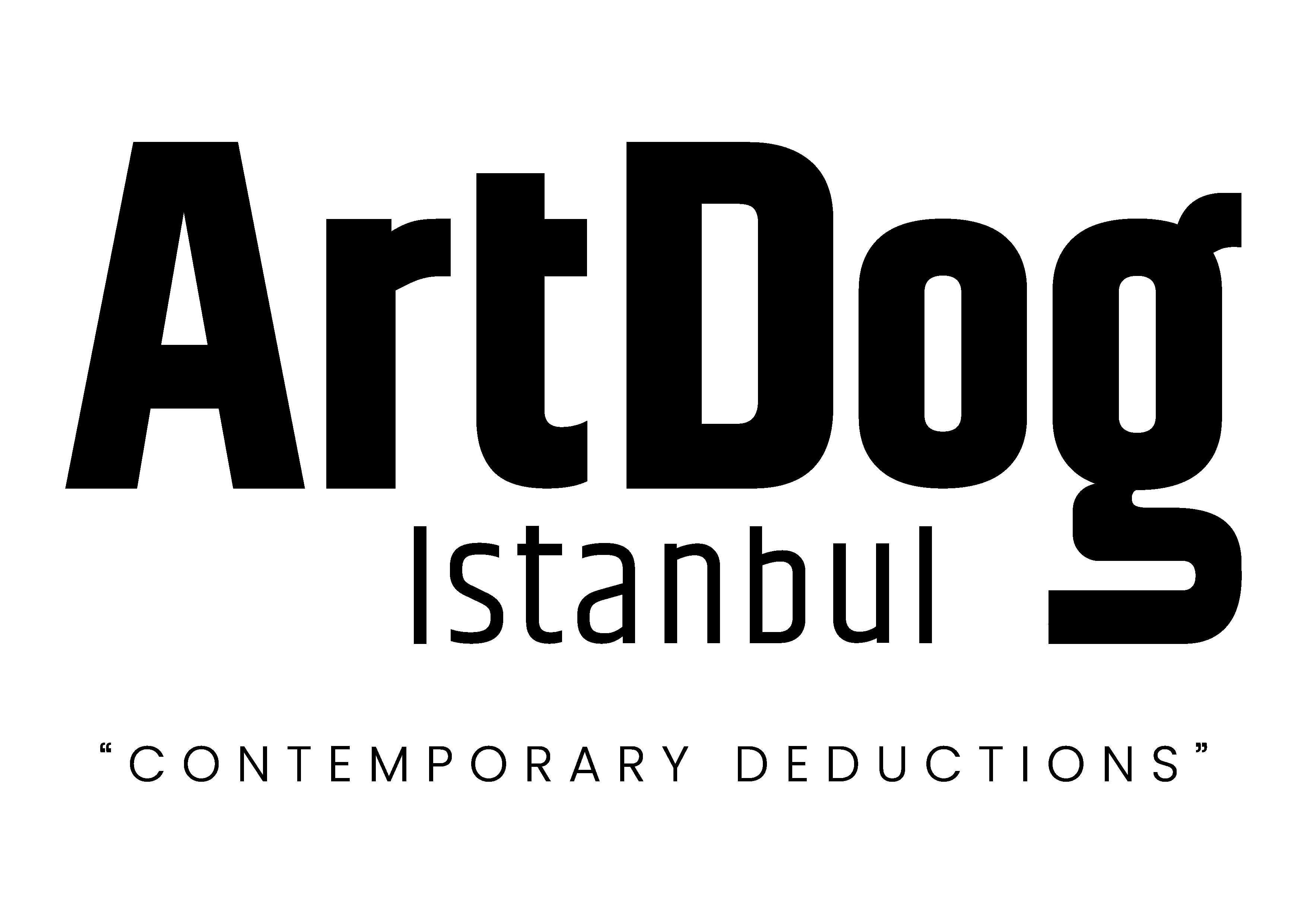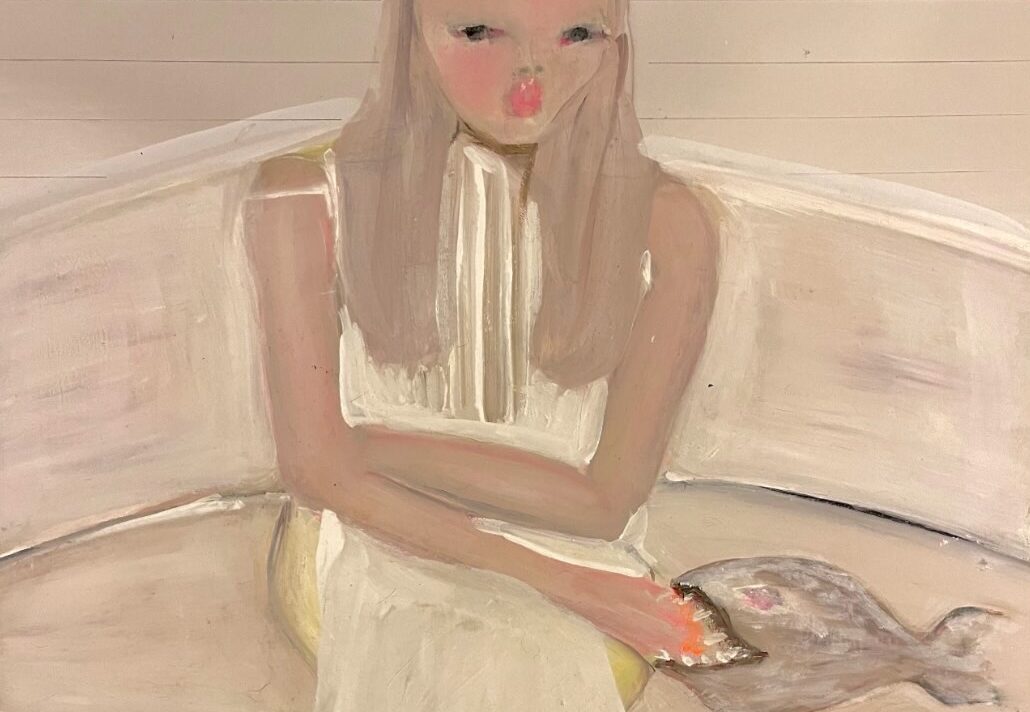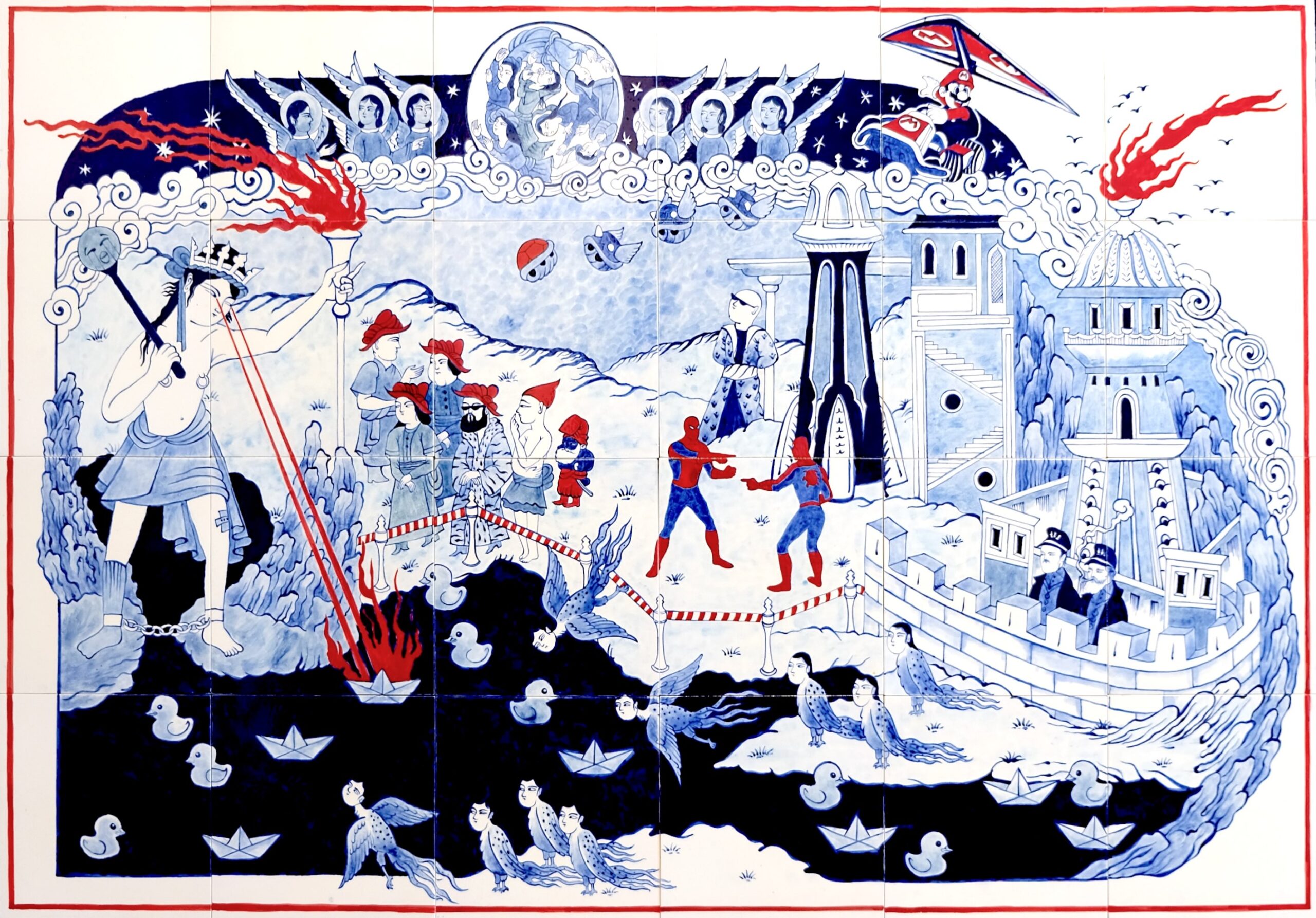Semra Russell’s pop-up exhibition Once Bitten Twice Shy at Muse Contemporary Gallery in Istanbul features works from her Swimming in Stars series.This series embraces life’s unpredictability rather than rejecting it, taking it as an aesthetic foundation. It reflects the artist’s efforts to materialize the invisible weight of experiences and emotions through art. Swimming in Stars explores her relationship with existence through light and color. The continuity of stars and the delicate glow of the pink moon symbolize inner transformation — a central theme in her works. By combining oil paint with metallic paper collage, Russell aims to bring together different emotional layers; this union creates an aesthetic language that is both fragile and resilient. Each piece draws from personal feelings while opening up to a collective experience, reminding us that beauty often emerges from cracks and fleeting moments.
Russell, a multidisciplinary creator working across art and fashion, was born in Turkey and lives and produces in London. In her work, she employs oil paint and various media techniques. During the COVID-19 pandemic, she created the Birth of Virginity series. Russell has collaborated with prestigious brands such as Halston, Lancôme, Puma, and Addiction by Ayako, and has been recognized as one of the best in her field. She has also worked with legends such as Cher, Kate Moss, and Madonna, and collaborated with Charlotte Tilbury, Hussein Chalayan, Mert Alas, Marcus Piggott, Lisa Eldridge, Ayako, Val Garland, and Isamaya French, as well as emerging designer Dilara Findikoglu.
During the COVID-19 pandemic, Russell created the Birth of Virginity series. Her previous exhibitions include:
-
2024, FRIEZE Los Angeles, THE BIRDS group exhibition
-
2021, The Birth of Virginity, solo exhibition, The AirMail, London
-
2021, The Lockdown, group exhibition, London
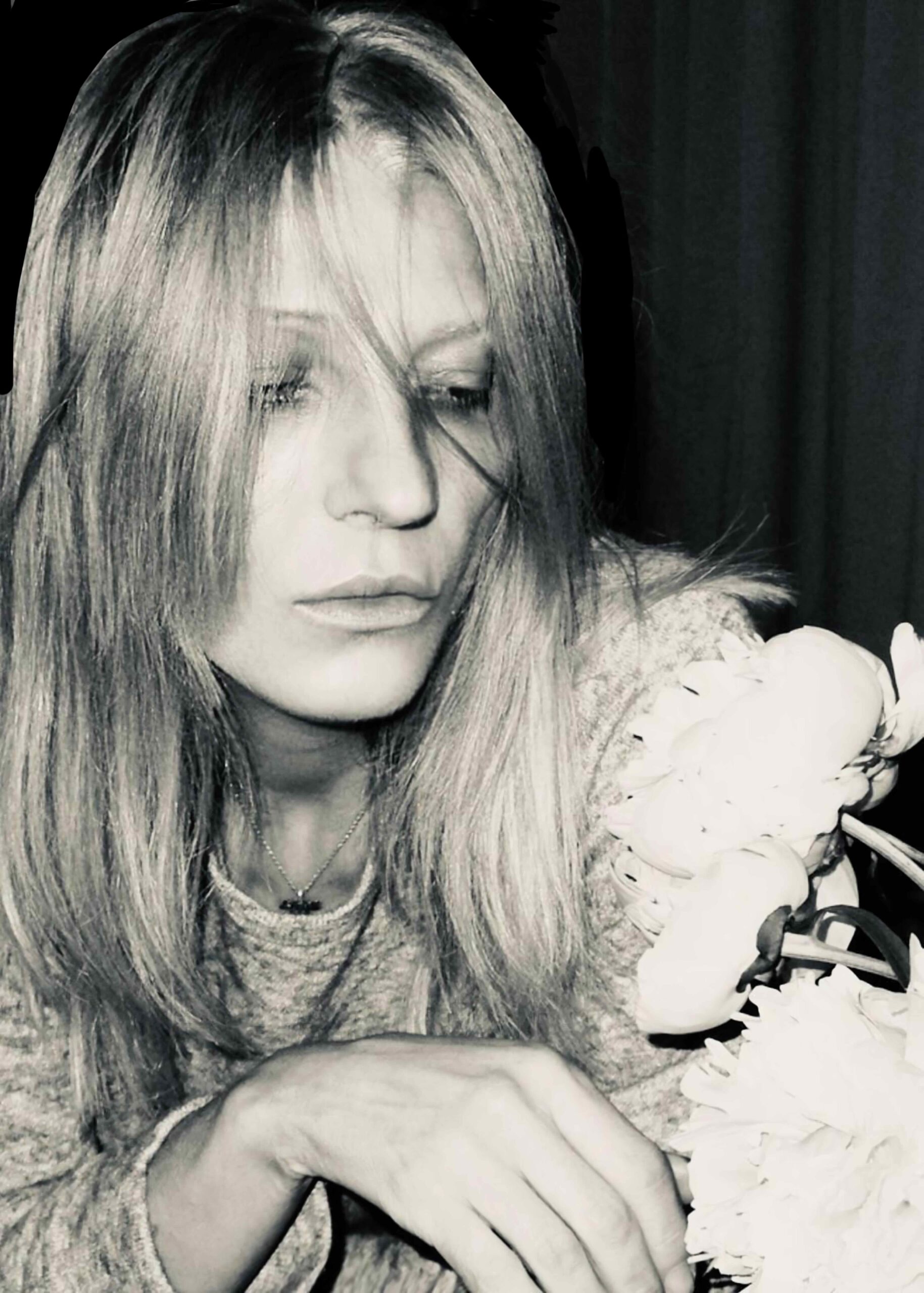
Curator: Catherine Hunt
From a curatorial perspective, how do you approach presenting someone like Semra Russell, whose visual language is still evolving but is nourished by a rich professional background?
Yes, presenting an artist like Semra requires balancing clarity and openness. As a curator, the goal is to create a space where her professional depth and creative development are both legible, while inviting audiences to witness the emergence of a new visual language — one still in formation but already informed by deep knowledge.
The Swimming in Stars series explores themes such as inner transformation and the emotional weight of existence. As a curator, how did you navigate balancing these intimate and personal elements with their resonance for a wider audience?
At the heart of this series lie inner transformation, unpredictability, and emotional weight — themes that are personal in origin but deeply universal in experience. As a curator, it’s impossible to generalize or dilute the emotional authenticity of Semra’s work. Instead, we framed her vulnerability as an entry point — a threshold inviting viewers to reflect on their own inner landscapes. Through language, rhythm, and spatial arrangement, we emphasized the honesty of her works while trusting that audiences would bring their own emotional vocabulary to the experience.
Semra uniquely combines oil paint with metallic paper collage. In what ways do you think these material choices enhance the emotional layers and conceptual depth of her works?
In this series, Semra merges the inner depth of oil paint with the reflective sharpness of metallic paper collage — a material union that voices the emotional dualities at the core of her practice. Layered and dense oil paint carries the weight of introspection; its textured surfaces evoke memory, fragility, and the slow unfolding of inner transformation. In contrast, metallic paper — luminous, delicate, and light-sensitive — interrupts and reframes the canvas, like moments of insight or rupture. It reflects, cuts through, and redefines. Together, these materials form a visual language of contrast and coexistence. The weight of feeling meets the shimmer of the transient. Stillness is broken by movement. Intimacy fractures and reflects through the surface. Russell’s material choices are not merely aesthetic — they act as a kind of emotional architecture, articulating unpredictability, rupture, and quiet resilience that define the human experience.
As someone who has observed her evolution in contemporary art, what strikes you most about the emerging artistic voice she is developing now? How does it set her apart from other interdisciplinary artists who follow more traditional art paths?
Semra’s emergence in contemporary art has been anything but ordinary. Coming from a successful fashion career, her swift evolution as a visual artist is not just a shift between disciplines but a profound reorientation of material, gesture, and meaning. What sets her apart — even at this formative stage — is her extraordinary emotional sensitivity guiding complexity; she uses materials not as ends in themselves but as carriers of psychological weight. Many interdisciplinary artists incorporate traces of their previous practices into their art, but Semra’s approach feels less strategic and more instinctive. She doesn’t merely reference her design background — she seems to internalize it. Her sensitivity to surface, layering, and spatial rhythm translates into her paintings; yet her recent works move beyond aesthetic fluidity into the realm of emotional truth. There is urgency in her gestures, a refusal to resolve neatly, and a comfort with ambiguity — positioning her as an artist uninterested in perfection for perfection’s sake.
What is most compelling about Semra’s art at this stage is what could be called “raw finesse” — a captivating tension between fragility and formal clarity. She treats materials like psychological strata: reflective yet resistant, fluid yet fragmented. Each piece feels like a moment caught mid-transformation, where the personal becomes porous and opens onto broader existential questions.
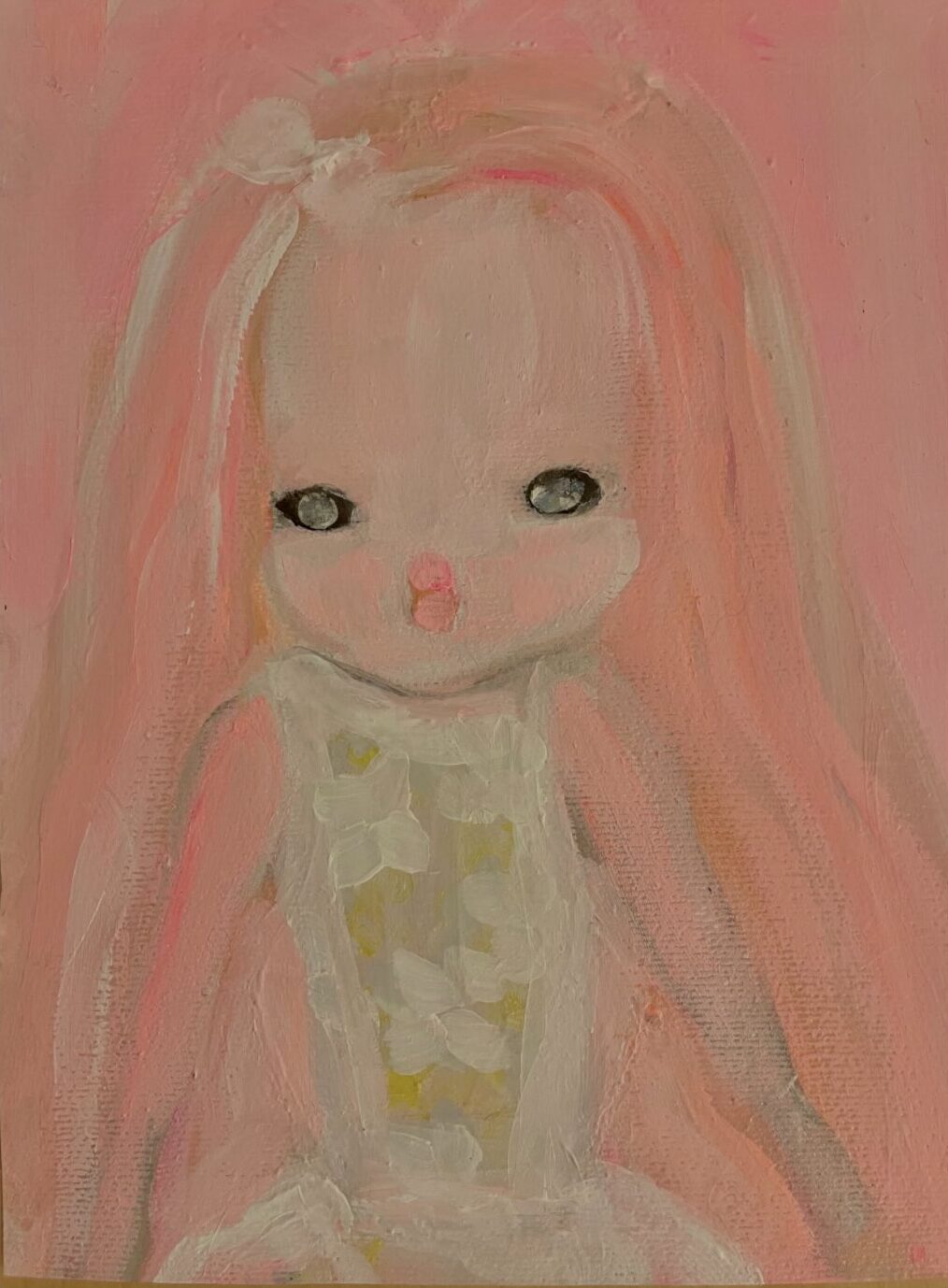
When conceptualizing this exhibition in Istanbul, did the city’s cultural and artistic fabric influence how you framed Semra’s work?
As an artist deeply connected to her Turkish roots, Semra’s work resonates with Istanbul’s intricate interplay of history, culture, and transformation. The city’s layered identities — where tradition meets modernity, and rupture coexists with continuity — mirror the emotional and material tensions central to her practice.
Finally, what do you find to be the most powerful elements in her artistic practice?
Semra’s work stands out for its emotional sensitivity, material intelligence, and formal restraint. Her greatest strength lies in the balance she strikes between fragility and control — her ability to suggest rupture, healing, and transformation without overstatement. Each piece feels like a quiet confrontation with complexity; fragmentation here is not failure but a form of existence. Russell’s evolving visual language is confident in its ambiguity; it invites contemplation rather than resolution. This tension — between softness and sharpness, weight and luminosity — gives her work a lasting impact.
Semra Russell – Swimming in Stars
Russell says that for her, art is a way to materialize the invisible weight of experiences and emotions. Using oil paint and mixed media techniques, she builds her creative process on inner voice and deep authenticity. This series explores her relationship with existence through light and color. The continuity of stars and the delicate glow of the pink moon symbolize inner transformation, a central theme. The combination of oil paint and metallic paper collage stems from a need to bring together different emotional layers. While the density of oil paint reflects the depth of emotions, the metallic surfaces refract light, evoking uncertainty and the possibility of renewal. This union creates an aesthetic language that is both fragile and resilient. Each piece is born from individual feelings yet opens to a collective experience.

